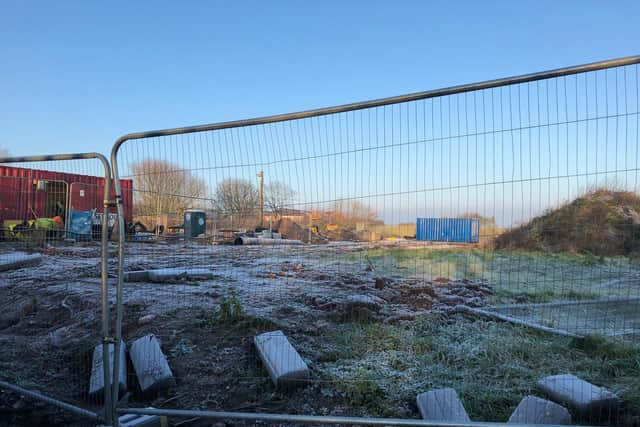Saxon burial ground containing 90 skeletons found on Hartlepool housing development site
and live on Freeview channel 276
Teams working on a 15-home development in Hart Village stumbled upon the remains when work began on the site behind Millbank Close in the village.
The find came to light at a Hartlepool Borough Council planning meeting, where councillors were asked to consider letting the developers off with some previously agreed financial obligations in light of the discovery and the costs involved.
Advertisement
Hide AdAdvertisement
Hide AdHelen Heward, from Planning House, speaking on behalf of the developers, said archaeological costs for the site had become “20 times” more expensive as a result of the discovery.


“The application to remove the requirement of planning obligations is the result of spiralling archaeological costs following the discovery of an ancient burial ground at the site where approx 90 skeletons have been exhumed, examined, analysed and obviously documented in the correct way,” she said.
“Whilst archaeology works were budgeted for it was never expected to be on the scale that this has resulted in.
“Even when the works were carried out, every time one was found it was expected that it would be the last one, so it really has spiralled.”
Advertisement
Hide AdAdvertisement
Hide AdAt the time, the developer agreed to pay £22,149 towards off-site affordable housing contribution, as well as £27,495 towards education and £3,750 each towards green infrastructure, play provision and sports facilities.
The conditions would also have seen one of the dwellings be classed as affordable housing.
Such agreements, called Section 106 agreements, are commonly made between councils and housing developers.
Advertisement
Hide AdAdvertisement
Hide AdHowever, the extra costs involved in archaeological work after the discovery of the Saxon cemetery led to the applicant returning to the committee to remove planning obligations which would have had to be paid to the council.
Ms Heward said further financial pressures have also been placed on the applicant as a result of the pandemic, with limited interest in the current plots.
However a ‘significant amount of money’ has been spent on the infrastructure being in place already, and the applicant is committed to delivering the housing, the committee heard.
Ms Heward added: “In this situation, a lot of money has already been spent on the development and the applicant is committed to delivering the housing on the site.”
Advertisement
Hide AdAdvertisement
Hide AdJim Ferguson, council planning and development manager, said it was a ‘very, very unusual case’ and officers were satisfied the outstanding obligations would ‘jeopardize the viability and the deliverability of the scheme’.
He said: “As archaeological work progressed on site, significant archaeological discoveries were made in the form of a Saxon cemetery.
“In order to deal with these important remains in an appropriate manner, the archaeological costs have increased substantially, and to date are almost 20 times the amount that was originally budgeted for, rising from £20,000 to £391,000.”
Councillors on the committee approved the removal of the costs, with two voting against the decision.